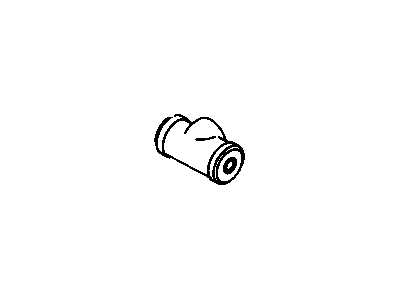
My Garage
My Account
Cart
Genuine Oldsmobile Cutlass Wheel Cylinder
Brake Wheel Cylinder- Select Vehicle by Model
- Select Vehicle by VIN
Select Vehicle by Model
orMake
Model
Year
Select Vehicle by VIN
For the most accurate results, select vehicle by your VIN (Vehicle Identification Number).
3 Wheel Cylinders found
Oldsmobile Cutlass Cylinder Asm,Rear Brake
Part Number: 19213346$25.30 MSRP: $47.74You Save: $22.44 (47%)Ships in 1-2 Business DaysOldsmobile Cutlass Cylinder Asm,Rear Brake
Part Number: 18029868$27.81 MSRP: $84.84You Save: $57.03 (68%)
Oldsmobile Cutlass Wheel Cylinder
The Wheel Cylinder is applied in Oldsmobile Cutlass automobiles to make the hydraulic drum brake system work by expanding the brake shoes against the brake drum for stopping imperative. It works on hydraulic action where hydraulic pressure moves pistons located inside the cylinder outwards so as to press the shoes against the drum. The Wheel Cylinder comprises of a central cylinder, two pistons with rubber seals and a spring that holds the seals in place. The Oldsmobile Cutlass vehicles have had both the cast iron and aluminum Wheel Cylinders in its existence, however, today's Wheel Cylinders have been manufactured using aluminum to counter the problem of rusting. Depending on the model some may have two single pistons while others are designed with two pistons only. Leakages should be addressed by periodic inspection and subsequent maintenance as constant may lead to low braking power and require the Wheel Cylinder to be rebuild or replaced to allow safe driving.
Each OEM Oldsmobile Cutlass Wheel Cylinder we offer is competitively priced and comes with the assurance of the manufacturer's warranty for the part. Furthermore, we guarantee the speedy delivery of your orders right to your doorstep. Our hassle-free return policy is also in place for your peace of mind.
Oldsmobile Cutlass Wheel Cylinder Parts Questions & Experts Answers
- Q: How to replace the wheel cylinder on Oldsmobile Cutlass?A:Raise the vehicle and remove the wheel, then take off the Brake Drum. Clean around the hydraulic connection to the wheel cylinder and disconnect the line, plugging the end to prevent fluid loss and dirt contamination. Remove the brake shoe pull back springs, followed by the cylinder-to-flange plate securing screws, disengaging the links from the brake shoes to remove the cylinder. For models from 1978 and later, insert two sharp awls or pins into the access slots at the rear of the backing plate and bend the retainer tabs away to release the wheel cylinder. Using pliers, remove and discard the boots from the cylinder, then remove and discard the piston cups. Inspect the cylinder bore and pistons for corrosion and pitting, discarding if pitted, while polishing stained surfaces with crocus cloth around the circumference. Ensure hands are clean, dry, and free from contaminants, then clean the metal parts in new brake fluid or denatured alcohol and shake off surplus fluid for ease of handling. Lubricate the cylinder with clean brake fluid and insert the spring expander assembly, followed by new cups that must be clean, dry, and not lubricated, ensuring the flat surface is forward to enter the ends of the cylinder. Install the pistons with the flat surface uppermost without lubrication, then press new boots into the cylinder counter bores without lubrication. When installing the wheel cylinder, position it on the brake flange plate and install screws loosely; for models from 1978-1980, use a block of wood between the cylinder and axle flange to hold it against the backing plate, then press a new retaining clip into position. Install the links and pull back springs, connect the hydraulic line to the cylinder while moving it as necessary to prevent stripping the threads, and tighten the cylinder mounting screws for models from 1974-1977. Finally, install the brake drum and wheel, bleed the braking system, and lower the vehicle to the ground.








